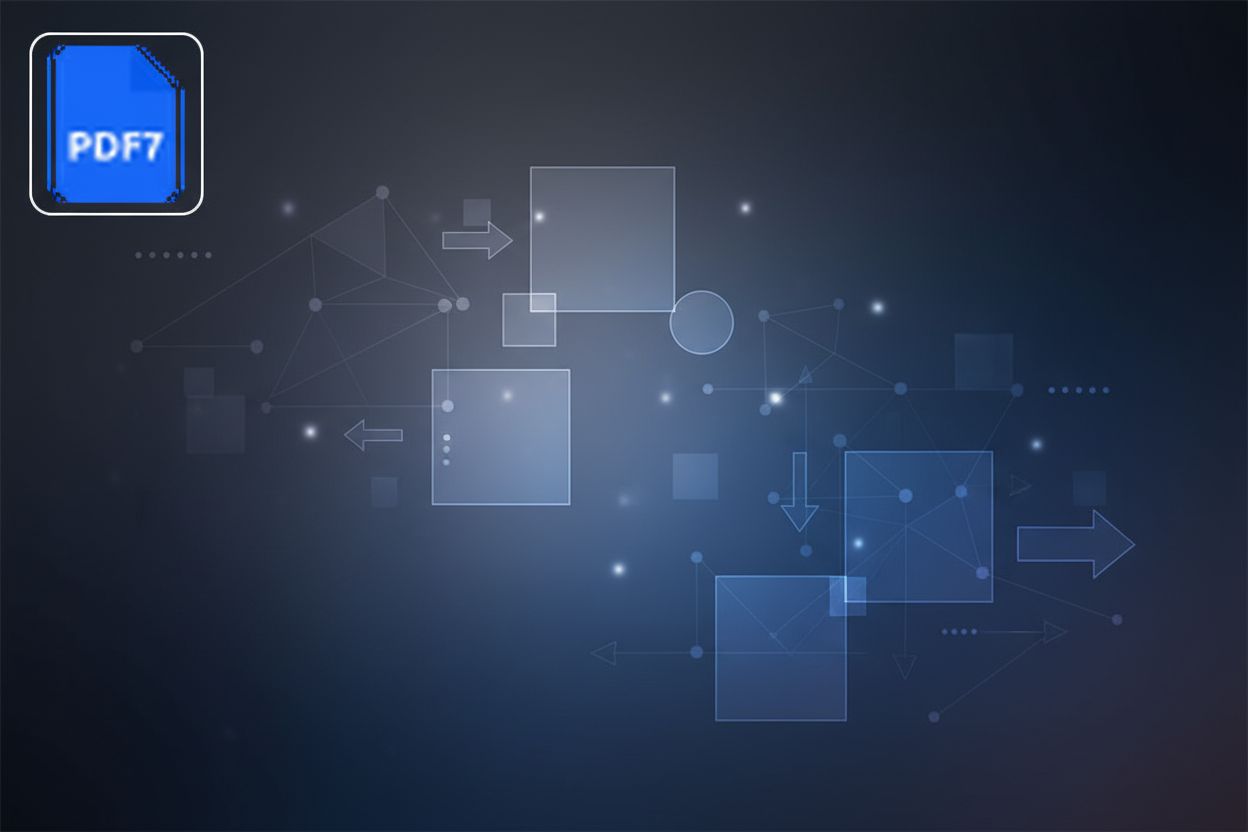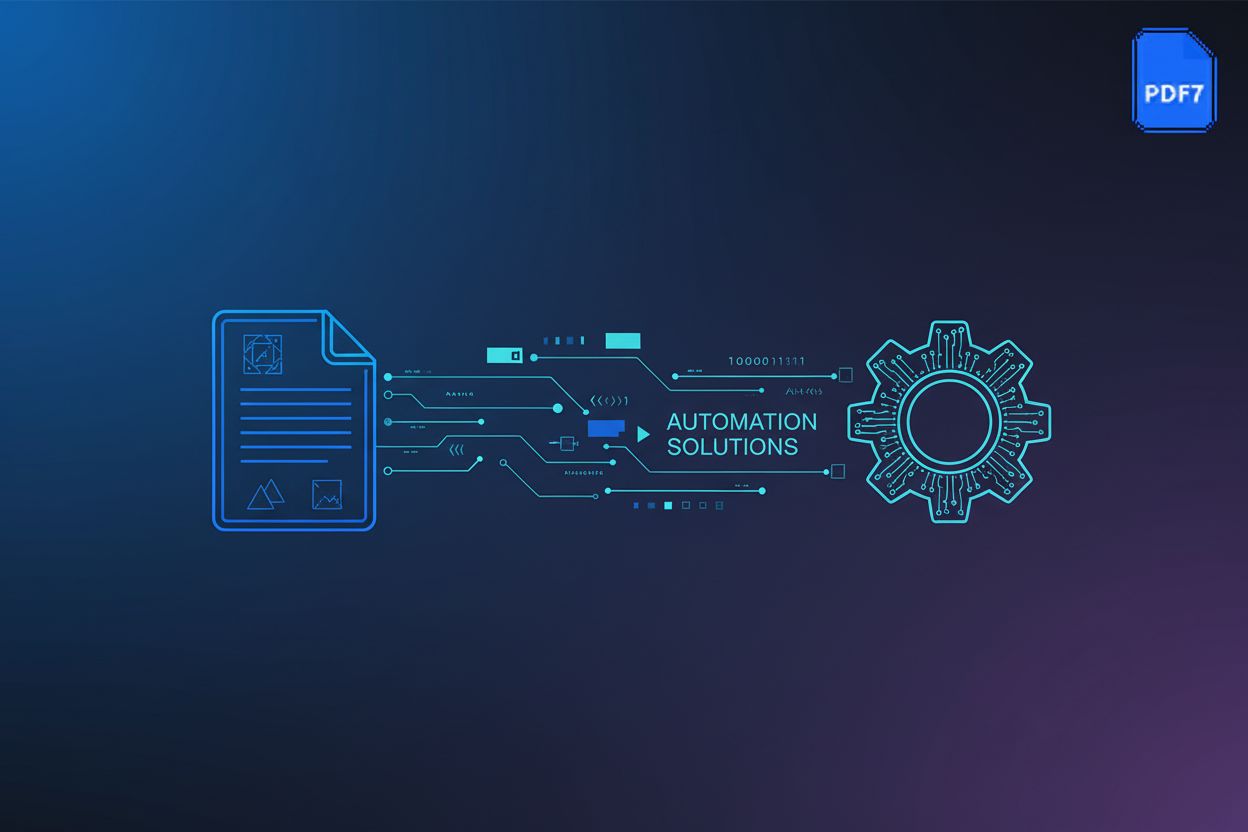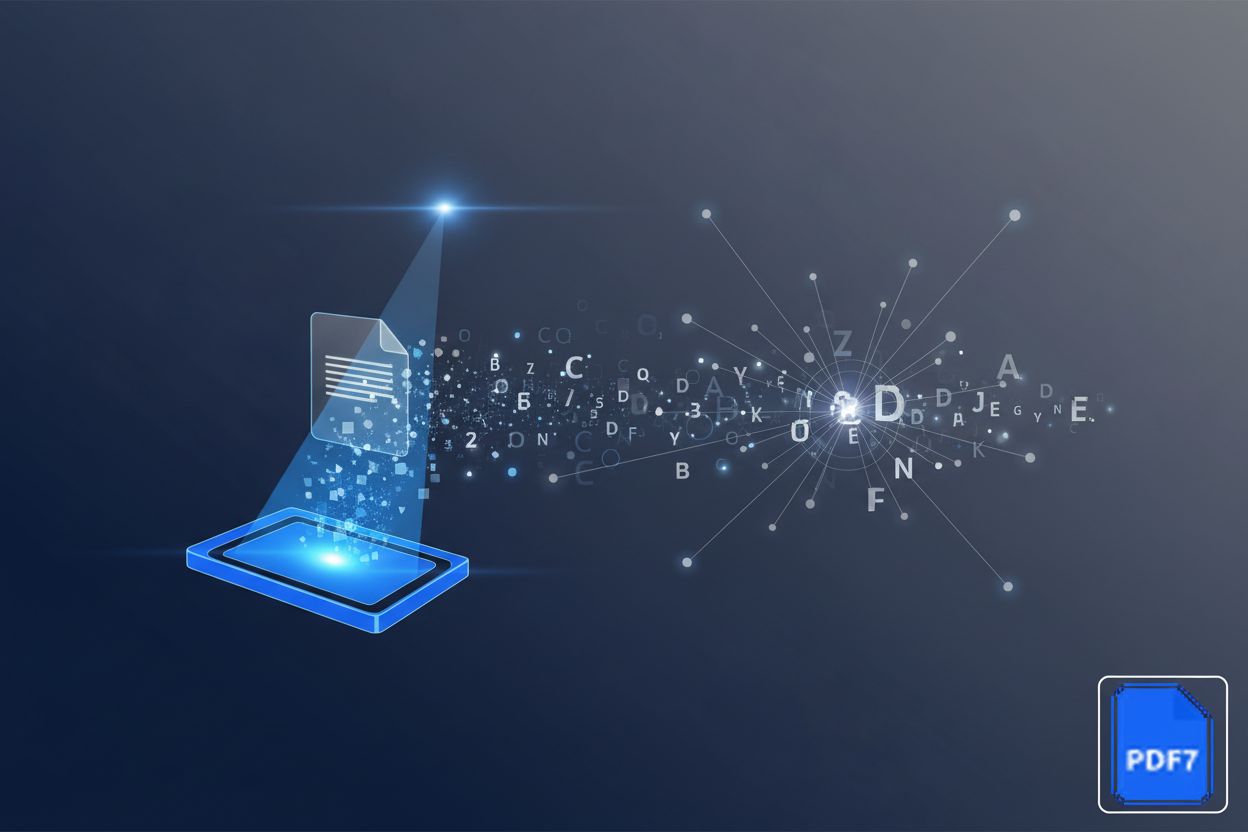Automate Data Extraction from PDF Documents
TL;DR
Understanding the Need for Automated PDF Data Extraction
Okay, let's dive into why automating PDF data extraction isn't just a nice-to-have, it's pretty much essential these days. Ever feel like you're drowning in documents? Yeah, me too.
We're swimming in data, but so much of it is trapped in PDFs. Think about it – invoices, reports, contracts; they're everywhere! Manually pulling info from these is slow, error-prone, and frankly, a huge waste of time. It's like trying to drink from a firehose with a straw.
And it's not just about the time; mistakes cost money. A typo in an invoice amount can throw off your whole budget. (7 Types of Invoice Discrepancies (And How to Resolve ...)
Here's the deal:
- Accuracy: Machines don't get tired or misread numbers, so errors are significantly reduced.
- Speed: Processes that used to take hours now happen in minutes. SolveXia claims their system is up to 100x faster than manual entry, which, honestly, sounds amazing.
- Real-time Insights: Get instant access to data for faster, better decision-making.
Need some inspiration? Consider streamlining invoice data with Power Automate, where you can extract PDF data and save it to Excel. How to Extract Data from PDF with Power Automate.
Ready to say goodbye to manual data entry? Let's see how this works.
Core Techniques for Automating PDF Data Extraction
Okay, so you're probably wondering how the heck we actually get data outta these PDFs, right? It's not magic; it's all about the techniques.
First off, we got Optical Character Recognition (OCR). Think of it as giving computers eyes that can actually read. It takes an image of text – could be a scanned doc or a PDF where the text is basically a picture – and turns it into something the computer can understand. PDFs can contain two types of text: selectable text, which is already machine-readable, and image-based text. OCR is specifically for converting that image-based text into machine-readable text. Without OCR, you're just staring at a bunch of pixels for image-based text.
OCR is a game changer for anything that started as a physical document. And, you know, it's not your grandma's OCR anymore. Modern OCR can handle different languages, weird fonts, and even handwriting – although, let's be real, sometimes it still struggles with my doctor's scribbles.
But just reading the words isn't enough, right? That's where Natural Language Processing (NLP) comes in. NLP is like giving the computer a brain for language. It lets them understand what the text means.
- NLP can pick out important stuff like names, dates, and amounts. For example, using techniques like Named Entity Recognition (NER), it can identify "invoice number," "due date," and "total amount."
- It can also figure out how those things relate to each other. With Relation Extraction, it can understand that a specific "invoice amount" is associated with a particular "invoice number" and "payment terms."
- Imagine it pulling out all the key info from a contract, like parties involved, dates, and obligations.
Then, to make things even smarter, we throw AI and machine learning into the mix. This is where the system starts to learn from examples. It gets better over time, recognizing patterns and adapting to new document formats. It’s like teaching a dog a trick, but instead of treats, it gets data.
This is super useful because, let’s face it, not all PDFs are created equal. Some are formatted nicely, some are a total mess. AI helps the system deal with that messiness and get smarter as it goes.
So, that's the core of it. Now, how does all this tie together, and what are some other things we can do? Let's see.
Rule-Based vs. AI/ML-Based Data Extraction: Choosing the Right Approach
Okay, so rule-based versus AI/ML – it's like choosing between a Swiss Army knife and, well, a really smart Swiss Army knife. But which one's actually gonna work best for you?
Rule-Based Systems: These systems rely on predefined rules, patterns, and templates to extract data. You essentially tell the system exactly where to look for specific pieces of information.
- How it works: You define rules like "the invoice number is always in the top right corner, preceded by 'Invoice #'" or "the total amount is the last number on the page, preceded by '$'."
- Pros:
- High Accuracy for Structured Data: When documents are consistently formatted, rule-based systems are incredibly accurate and fast.
- Predictable: You know exactly why a piece of data was extracted or missed.
- Lower Initial Cost (sometimes): Can be cheaper for very simple, consistent tasks.
- Cons:
- Brittle: Fails if the document format changes even slightly.
- Labor-Intensive Setup: Requires significant manual effort to define rules for each document type and variation.
- Not Scalable for Variety: Difficult to manage when dealing with a wide range of document layouts.
- When to use: Ideal for highly standardized documents like specific types of forms, pre-printed invoices with fixed layouts, or reports with a consistent structure.
AI/ML-Based Systems (Intelligent Document Processing - IDP): These systems use machine learning algorithms to learn from data and identify information, even in unstructured or semi-structured documents.
- How it works: The AI is trained on a dataset of documents. It learns to recognize entities (like dates, names, amounts) and their relationships, regardless of their exact position or formatting. It can adapt to variations and new document types over time.
- Pros:
- Handles Unstructured Data: Excellent for documents with varying layouts, handwriting, or missing information.
- Adaptable and Scalable: Learns and improves with more data, making it suitable for a wide range of document types and volumes.
- Reduced Manual Effort (post-training): Once trained, it requires less ongoing rule maintenance.
- Cons:
- Requires Training Data: Needs a substantial amount of labeled data to train effectively.
- "Black Box" Nature: Can sometimes be difficult to understand why a specific extraction occurred or failed.
- Higher Initial Investment: Can require more complex setup and potentially higher upfront costs for AI models and infrastructure.
- When to use: Best for complex documents like contracts, emails, scanned receipts, handwritten notes, or when dealing with a high volume of diverse document types.
Hybrid Systems: These systems combine the strengths of both rule-based and AI/ML approaches.
- How it works: A hybrid system might use AI to identify potential data fields and then apply specific rules to validate or refine those extractions. For example, AI could identify all numbers on an invoice, and then rules could be applied to determine which number is the "total amount" based on its position or surrounding keywords. Alternatively, rule-based systems can handle the straightforward extractions, while AI is reserved for more complex or variable sections.
- Pros:
- Best of Both Worlds: Leverages the accuracy of rules for structured parts and the flexibility of AI for unstructured parts.
- Improved Accuracy and Robustness: Can achieve higher accuracy than either approach alone.
- Efficient Resource Utilization: Uses AI where it's most needed, potentially reducing computational costs.
- When to use: Highly recommended for most real-world scenarios where documents have a mix of structured and unstructured elements, or when you need to maximize accuracy and efficiency across a diverse document set.
A Step-by-Step Guide to Automating PDF Invoice Extraction
Okay, so you've got the invoice—now what? Time to get it ready for the AI to work its magic.
1. Document Ingestion: First, you gotta get those invoices. I mean, duh, right? But think about it--are they coming in via email? Are you uploading them? Maybe even scanning 'em? Each way needs a little... finesse.
* Email: Setting up an automated process to monitor specific inboxes and extract attachments.
* Uploads: Designing a user-friendly interface for manual uploads or integrating with other systems.
* Scans: This is where things can get tricky.
2. Preprocessing: See, scans can be tilted, blurry, just generally a mess. So, preprocessing is key. We're talkin' image enhancement, skew correction, de-speckling, and contrast adjustment—basically, cleaning up the scan so the OCR doesn't choke on it. This step ensures the image quality is optimal for accurate text recognition.
3. Document Classification: Also, document classification is important, so the system knows it's looking at an invoice and not something else. This might involve using AI models to identify the document type based on keywords, layout, or specific visual cues.
4. Data Extraction: Next up, the fun part: actually grabbing that data. This is where OCR, NLP, and AI/ML really shine.
* OCR: The OCR engine converts the image-based text within the invoice into machine-readable characters.
* NLP/AI: Once the text is recognized, NLP and AI models are used to identify and extract specific data points. For example:
* Invoice Number: The system might look for patterns like "INV-XXXXX" or keywords like "Invoice Number:" followed by a string of characters.
* Invoice Date: It will identify dates using NER, recognizing formats like MM/DD/YYYY, DD-MM-YY, or even "January 15, 2024."
* Vendor Name: NER can pick out company names, often found at the top of the invoice.
* Line Items: More advanced AI can parse tables to extract individual product descriptions, quantities, unit prices, and line totals.
* Total Amount: The system will identify the final amount, often looking for keywords like "Total," "Grand Total," or the largest numerical value on the invoice, and then use rules or AI to confirm it's the correct figure.
5. Data Validation and Structuring: After extraction, the data is often validated against predefined rules or external databases (e.g., checking if a vendor exists). The extracted data is then structured into a usable format, like a CSV file, JSON, or directly into a database or accounting software.
6. Post-processing and Integration: The structured data can then be used for various downstream processes, such as updating accounting systems, generating reports, or triggering workflows.
Use Cases Across Industries
Okay, so you're thinking "where all can I use this stuff?" Turns out, everywhere! Let's look at some specific industries.
- Finance: Think about accounts payable. Automating invoice processing means no more manual entry of invoice numbers and dates. It also streamlines reconciliations and reduces the risk of duplicate payments.
- Insurance: Claims processing is a bear, right? Extraction tech can process different formats of claim documentation, like accident reports, medical bills, and police statements. It can also improve compliance by ensuring all necessary information is captured.
- Real Estate: Imagine using extraction tools to process rent rolls and lease agreements. You can quickly assess portfolio performance by extracting rental income, tenant details, and lease terms. That saves time and lets you focus on tenants.
- Healthcare: Extracting patient demographics, insurance information, and medical history from various forms and reports can significantly speed up patient intake and billing.
- Legal: Automating the extraction of key clauses, dates, and party names from contracts and legal documents can save lawyers countless hours of review.
You know, it's kinda wild how much time this can save you. The possibilities, honestly, are endless. Now, let's talk about something I find fascinating: choosing the right extraction tool for your needs.
Choosing the Right PDF Data Extraction Tool: Key Considerations
Okay, so you're ready to pick a tool, huh? It's kinda like dating, you gotta know what you really want.
First up: what kinda files are you gonna be throwing at it? If it's just invoices, cool. But what if you got contracts, reports, all sorts of crazy stuff? Make sure it can handle the variety.
- File Types: Consider if you'll be dealing with scanned PDFs, digitally created PDFs, Word documents, images (like JPEGs or TIFFs), or even faxes. Some tools are better suited for specific types. For example, a tool that excels at scanned documents might struggle with digitally native PDFs that have complex formatting.
- Document Complexity: Are your documents simple, single-page forms, or multi-page, complex reports with tables, charts, and varied layouts?
Next, think about how smart you need this thing to be. Can it find the right fields automatically? Or will you spend hours teaching it?
- Levels of AI/ML Capability:
- Template-Based: Requires you to define specific zones or templates for each document type. Good for highly consistent documents but brittle.
- Rule-Based (as discussed): Relies on predefined rules.
- Intelligent Document Processing (IDP): Uses advanced AI/ML to learn from data, understand context, and extract information from unstructured or semi-structured documents without rigid templates. This is the most flexible and powerful option for varied document sets.
- Learning and Adaptability: Does the tool learn from corrections? Can it adapt to new document variations over time with minimal human intervention?
- Levels of AI/ML Capability:
And hey, what about cost? Don't just look at the sticker price. What's it gonna cost you in time, training, and headaches?
- Pricing Models:
- Per Document/Page: You pay for each document or page processed. Good for variable volumes but can become expensive with high usage.
- Subscription-Based: A fixed monthly or annual fee for a certain volume or feature set. Predictable costs.
- Tiered Pricing: Different levels of features or support at different price points.
- Enterprise Licenses: Custom pricing for large-scale deployments.
- Hidden Costs: Consider costs for implementation, training, ongoing support, API usage, and potential overage charges if you exceed your plan limits.
- Pricing Models:
Integration Capabilities: How well does the tool integrate with your existing systems (CRM, ERP, accounting software, cloud storage)? Look for robust APIs or pre-built connectors.
User Interface and Ease of Use: Is the platform intuitive for both setup and ongoing use? Consider the learning curve for your team.
Security and Compliance: For sensitive data, ensure the tool meets industry-specific security standards and compliance regulations (e.g., GDPR, HIPAA).
Scalability: Can the tool handle your current volume and scale up as your needs grow?
Future Trends in PDF Data Extraction
Okay, so what's next for PDF data extraction? It's not gonna stay still, that's for sure! Think of it like this--remember when GPS first came out? Clunky, expensive, now it's on every phone.
No-code/low-code platforms are gonna make this stuff way easier to use; you won't need to be a programmer to set up extractions anymore. This democratizes the technology, allowing business users to build and manage extraction workflows.
Multimodal extraction is where it gets really interesting. grabbing data from text, images, charts, and tables all at the same time. This means a single AI model can understand and extract information from different types of content within a document, providing a more holistic understanding.
And get ready for AI co-pilots. Imagine an AI assistant that helps you set things up, it could be pretty cool. These assistants could guide users through the setup process, suggest optimal extraction rules, and even help troubleshoot issues, making the entire experience more efficient and user-friendly.
Enhanced Explainability (XAI): As AI becomes more complex, there's a growing demand for systems that can explain how they arrived at a particular extraction. This builds trust and helps in debugging.
It's all about making extraction smarter, faster, and easier.





